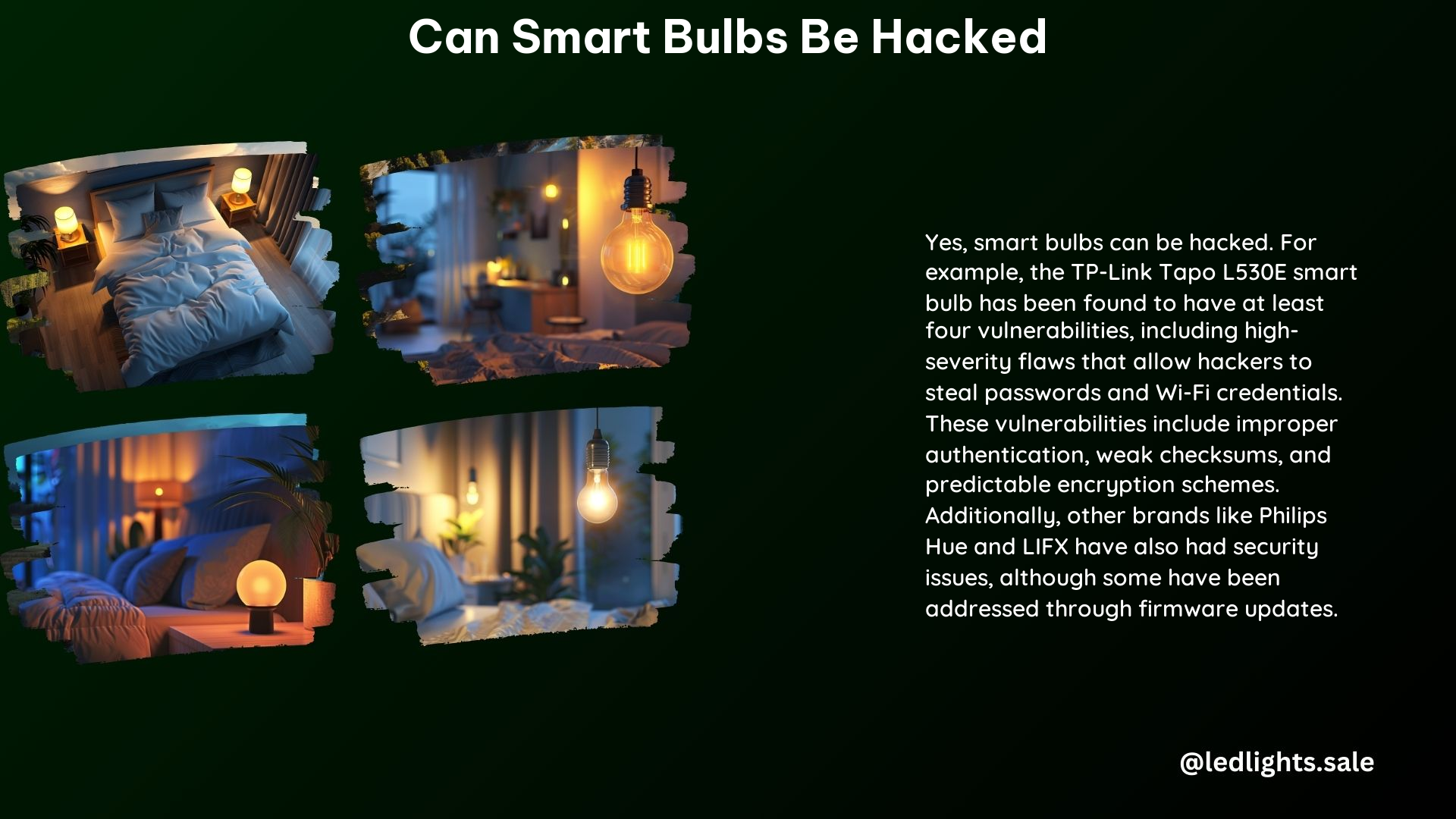Smart bulbs have become increasingly popular in recent years, offering convenience, energy efficiency, and the ability to control lighting remotely. However, these connected devices are not immune to security vulnerabilities, and hackers have discovered various ways to exploit them. In this comprehensive guide, we will delve into the world of smart bulb hacking, exploring the common vulnerabilities, the potential consequences, and the steps you can take to protect your home network and devices.
Vulnerabilities in Smart Bulbs
Improper Authentication
One of the most significant vulnerabilities found in smart bulbs is improper authentication. The TP-Link Tapo L530E smart bulb, for example, has a high-severity vulnerability (CVSS v3.1 score of 8.8) that allows attackers to impersonate the device during the session key exchange. This can enable them to steal user passwords and gain control over other Tapo devices on the network.
Weak Checksum Code
Another vulnerability in the TP-Link Tapo L530E smart bulb is a high-severity flaw (CVSS v3.1 score of 7.6) due to a hard-coded short checksum shared secret. This secret can be obtained by brute-forcing or decompiling the Tapo app, making it easier for attackers to bypass the device’s security measures.
Lack of Randomness in Encryption
The encryption scheme used by some smart bulbs can be predictable due to a lack of randomness during symmetric encryption. This makes it easier for attackers to decode the cryptographic scheme and gain unauthorized access to the device.
Session Key Validity
In some cases, the session keys used by smart bulbs remain valid for an extended period, typically 24 hours. This allows attackers to replay messages during this time frame, potentially compromising the device’s security.
Consequences of Smart Bulb Hacking

Access to Wi-Fi Password
One of the most concerning consequences of smart bulb hacking is the potential for attackers to gain access to the Wi-Fi password. This can enable them to control all devices connected to the same network, including other smart home devices, computers, and mobile devices.
Man-in-the-Middle (MITM) Attacks
The vulnerabilities found in smart bulbs can be exploited to perform MITM attacks. Attackers can intercept and manipulate the data exchanged between the bulb and the controlling device, allowing them to monitor and tamper with the communication.
Network Configuration Exposure
In rare cases, the hacking of smart bulbs can lead to the exposure of network configuration details. This typically requires physical proximity to the bulb and reverse-engineering of the firmware, but it can still pose a significant risk to the overall security of the home network.
Mitigating the Risks
Regular Firmware Updates
Keeping your smart bulbs up to date with the latest firmware is crucial to address known vulnerabilities. Manufacturers often release firmware updates to patch security flaws, so it’s essential to regularly check for and install these updates.
Multi-Factor Authentication (MFA)
Enabling MFA on all devices and apps associated with your smart bulbs can add an extra layer of security. This helps prevent unauthorized access, even if an attacker manages to obtain your login credentials.
Secure Passwords
Using unique, complex passwords for each account and avoiding password reuse across different services can significantly reduce the risk of credential theft and unauthorized access.
Network Segmentation
Isolating your smart home devices from critical networks, such as those used for work or sensitive data, can help minimize the attack surface and contain the potential damage in the event of a successful hack.
Physical Security
Ensuring that your smart bulbs are not easily accessible to unauthorized individuals is crucial, as some attacks may require physical proximity to the device.
By understanding the vulnerabilities, potential consequences, and mitigation strategies, you can take proactive steps to secure your smart bulbs and protect your home network from the risks of hacking.
References
- https://www.youtube.com/watch?v=uD031WKT6NA
- https://www.reddit.com/r/Hue/comments/ez992b/your_philips_hue_light_bulbs_can_still_be_hacked/
- https://www.digitaltrends.com/computing/hackers-can-steal-passwords-through-tp-link-smart-bulbs/
- https://www.tomsguide.com/news/these-smart-bulbs-can-be-hacked-to-steal-your-wi-fi-password-what-you-need-to-know
- https://www.bitdefender.com/blog/hotforsecurity/has-your-smart-wifi-enabled-led-light-bulb-been-hacked/
